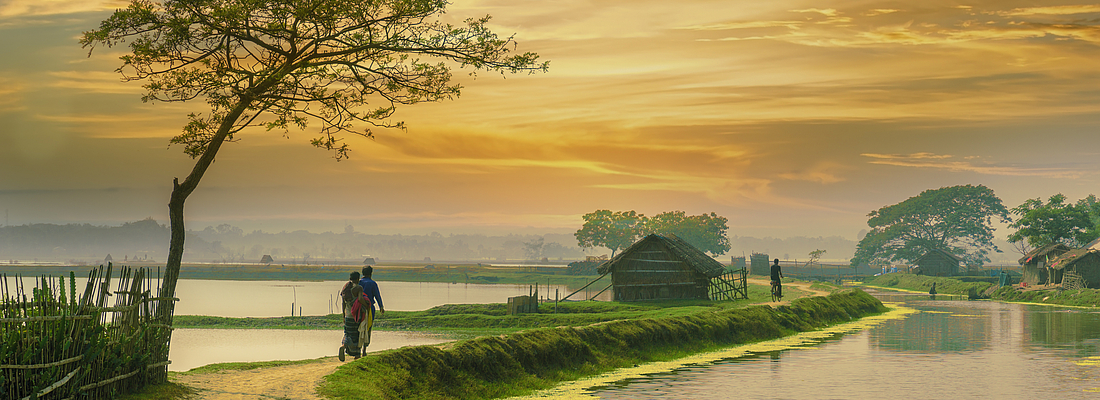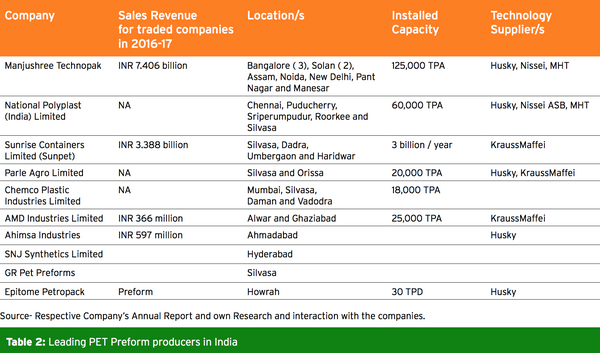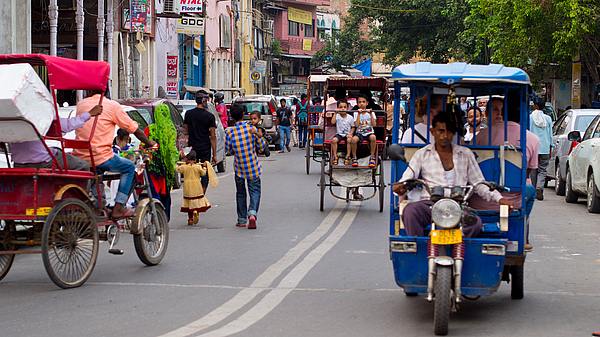

India is a country of remarkable potential and opportunities. The second most populous nation on the globe (1.27 billion) has been one of the fastest growing economies in the recent years. Not surprisingly, with a predominantly young population, the consumption of beverages (and resultantly PET packaging) in the country has grown at high rates. With a forecasted annual growth of more than 10 % per year in coming years, Indian beverage market and PET industry are expected to maintain its healthy run for the foreseeable future. PETnology presents an overview of PET packaging in the Indian beverage industry in this article.
OVERVIEW OF INDIAN BEVERAGE INDUSTRY
Beverage industry and consumption in India has registered double digit growth for a number of years. While, most of the Indian beverage industry growth came from carbonated beverages in 1990’s and 2000’s, non carbonates and fruit based beverages and packaged water fueled the growth in the current decade.
Rising affluence and disposable income of a vast section of population, rising urbanization and change in lifestyle, change in tastes and preferences, increase in tourism in India and number of Indian travelling within and outside India, increasing awareness and accessibility of new products and acceptability of these products are some of these factors behind the steady growth of beverage industry in India.
Major beverage producers such as Pepsi and Coca-Cola has invested billions of dollars in Indian market in last few years to take advantage of current low per capita beverage consumption. Coca-Cola announced in 2012 to invest USD 5 billion in Indian operations till 2020. Similarly, Pepsico made an announcement in late 2013 to invest USD 5.5 billion by 2020.
Speaking to the media during his first Indian tour in the capacity of Coca-Cola’s president and chief executive, James Quincey said, “We are laying the foundation to make India as the third largest market for Coke in coming years.” To achieve this, the company has committed to invest up to $5 billion by 2020. “We are in line with this investment. We will keep investing in India as the future is very positive. The company is adopting a three pronged strategy to fuel its growth. It is diversifying its product base away from aerated drinks which still accounts for a significant share of the business. The company has been launching fruit juices, and this trend will only increase,” Quincey told the media.
Ranking at sixth position on volume basis, India has been one of the most important markets for Coca- Cola. The US Company is also one of the largest users of PET packaging for its products in Indian market.
Like most of the developed countries, India too is catching up in terms of changing consumer preferences towards non- carbonates and healthy beverages. Fruit based beverages and packaged water has gained immensely in last few years due to the shifting consumer preferences. According to the USA based International Bottled Water Association (IBWA), India was the sixth largest consumer of bottled water market on volume basis at the end of 2015. According to the association, India registered a CAGR of 10.9 % between 2010 and 2015 in bottled water consumption.
PET PACKAGING IN INDIAN BEVERAGE INDUSTRY
PET packaging in Indian beverage industry made a silent entry in early 1990’s, when MNC cola producers started to offer their cola brands in this form of packaging. After facing initial teething problems, PET packaging has made great inroads in the beverage packaging. Until late 1990’s, refillable bottles dominated the beverage market in India because they made packaged beverages affordable to more Indians and because most retailers were small stores. The arrival of supermarket chains and discounters during the early 2000s accelerated a takeover by one-way containers, especially in the soft drinks market. These retailers have strongly resisted selling beverages in refillable containers.
A number of factors, such as changing lifestyle, modern retail and price sensitivity of Indian customers have given PET packaging an unparalled advantage over other forms of packaging in beverage packaging. Prohibitive cost of glass and metal packaging and their limitations such as- handling problems, space constraints and performance- have further
helped the cause of PET packaging in beverage industry. Carbonated beverages in 2000 and 1000 ml bottles are exclusively available in PET bottles. Till a few years back, glass bottles has a significant share of 1000 ml bottles, but suitability of PET has made glass bottles disappear from this size.
Glass bottles, which have some market share in 200, 250 and 300 ml sizes, are increasingly losing their market shares even in this segment. Beverage producers started experimenting with PET packaging in these sizes a couple of years back and have been able to give glass bottles a very stiff competition. For example, Coca Cola India started to offer PET bottles in the 250-ml size in mid 2016. “Based on a new technology (a first of its kind in the world), the pack radically extends the shelf life of small PET, “according to a statement from Coca Cola India. The company further says, “Rural areas have always been a problem for PET bottles because it loses the gas. So, this is a way of really being able to extend the reach way further into the rural areas.”
Speaking to comPETence Secretary General of New Delhi based, Indian Beverage Association (IBA), Arvind Varma told, “PET has been able to corner lion’s share in Indian beverage packaging in recent years. Currently, about 80 % of the total packaging in domestic beverage industry is in PET format.” Largest growth for PET packaging has come from packaged water industry of the country. Indian packaged water industry has seen a 22% CAGR in terms of volume over the past five years. Market stimulants for bottled water include rising population, consumer spending patterns, lifestyle trends, and growing levels of health consciousness, among others. Increasing consumer awareness and growing consciousness about water borne diseases has helped the industry to grow at very healthy rates. The trend is likely to continue led by continued rise in awareness over health concerns along with drinking water shortages especially in urban areas, making consumers opting for packaged drinking water.

PET PACKAGING - UNFAIRLY TARGETED
Despite, its usefulness and suitability as the most preferred packaging material; PET has been increasingly targeted in India. Recently, government of state of Maharashtra unveiled a plan (November 2017) to become a plastic-free state from March 2018. The first usual target was PET bottles.
According to the Environment Minister for the state, Ramdas Kadam, “The government would like to start the ban on packaged water bottles from state legislature and other government offices to create a role model before extending it to private offices.”
Maharashtra is not the first state to make an attempt to restrict the use of PET/plastic packaging. In the past, some other states have tried to curb use of the packaged drinking water in PET bottles, but failed.
“Proposal to make the state plastic-free by banning packaged bottles is likely to pinch consumers’ pockets. Glass and metal bottles are bulkier; they will increase the cost of transportation. Eventually, consumers will have to pay a higher price for the final product,” according to Haren Sanghavi, immediate past president of the All India Plastics Manufacturers Association (AIPMA).
“Instead of moving forward, we are going back in age,” says Sanghavi. “The plastic industry is always targeted. We are a victim of perception. Garbage is associated with plastic though 90% of plastic bottles are recycled.”
Arvind Varma, Secretary General, Indian Beverage Association (IBA) says, “Time and again, detractors have often stoked Chemo-phobia and recyclability concerns for PET industry, despite the contrary findings. Currently, about 70 % of the PET bottles in the country are recycled.”

PET RECYCLING IN INDIA
Though, official data for PET recycling are not available in India, but according to a recent report PET recycling in the country stands about 70 %. The report, initiated by Indian Pet Packaging Association for Clean Environment (PACE) and carried out by the Pune (a city about 180 Kms from Mumbai) based National Chemical Laboratory, states that PET bottle recycling business in India has grown to become an INR 35 billion industry. The yearlong study was carried out by scientists from Council of Scientific and Industrial Research (CSIR) - National Chemical Laboratory (NCL).
PACE is a New Delhi-based industry body representing PET manufacturers, processors and recyclers. PACE had initiated this report to understand the PET recycling scenario in the country. According to PC Joshi, general secretary, PACE, “We initiated this project in 2016 to understand how PET recycling is carried out in India. The study has revealed that 70 per cent of PET waste in India is recycled.”
Leading beverage and PET producers have partnered with PACE to improve the PET recycling practice in India. For example, Coca-Cola India has partnered with PACE to build awareness about the usability of used PET bottles and also promote the recycling of PET.

MANJUSHREE TECHNOPACK
With an annual turnover of INR 7.4 billion in financial year 2016-17, Manjushree Technopack is the largest PET preform producer in India. Company’s seven state of the art manufacturing facilities have an installed capacity of 4 billion units (125,000 tons) per annum. The company claims to serve more than 300 large and small customers all over the country. Pepsi, Coca Cola and Dabur are leading beverage producing clients for the company.
Manjushree acquired three manufacturing facilities ( Baddi, Pantnagar and Noida) of one of its competitor, Varahi Limited through an acquisition in late 2016. The company also started a Greenfield facility in the North Eastern region of the country at Guwahati in March 2017.
In addition to domestic market, Manjushree also exports PET performs in the region. In FY 2016-17 %, the company earned about 7 % of its total revenue through exports.
NATIONAL POLYPLAST INDIA
Commencing PET containers and performs with a modest capacity, National Polyplast has become the second largest PET containers and performs with an installed capacity to produce 60,000 TPA of finished products.
Equipped with state of the art technology from leading technology providers such as Husky, MHT and Nissei ASB the company is a leading supplier of PET containers and performs to leading beverage companies in the country. Currently, the company operates nine production lines at five manufacturing locations in the country. The company produces more than 30 preform variants including Alaska 3 Start, Novembal 267, 38 mm 2 Start and 30/25 neck finishes. Most of the high volume performs are made on Husky HyPET HPP systems, while the lower volume performs are produced on Nissei lines.
PARLE AGRO
INR 28 billion company, Parle Agro Pvt. Ltd. is among the leading beverage producer and PET perform producers. The company operates under three business verticals: beverages, packaged drinking water and PET performs.
Starting PET performs and container production in 1996 at Silvasa, Parle Agro has set up its second manufacturing unit in Orissa. About 40 % of the company’s PET products are meant for captive consumption while the rest 60 % are sold to external customers.
FUTURE PROSPECTS
PET packaging in India is expected to register double digit growth for a number of years to come. The country has been ranked 8th among 215 countries in terms of the number of middle-class adults in 2015. In coming years, India is expected to have a middle-class that will be larger than that in the US or EU. India’s consumption would therefore be dominated by the middle class who are willing to experiment with the variety of beverages offered by the companies.
Beverage consumption, which is hitherto confined to major cities and towns, is expected to grow in the rural areas. As about 70 % of India’s population live in villages, which is currently under-penetrated, beverage and PET consumption from the rural population will keep the growth momentum for Indian PET packaging industry for the foreseeable future.

The comPETence center provides your organisation with a dynamic, cost effective way to promote your products and services.

magazine
Find our premium articles, interviews, reports and more
in 3 issues in 2026.


